Speed Spring Crops Along
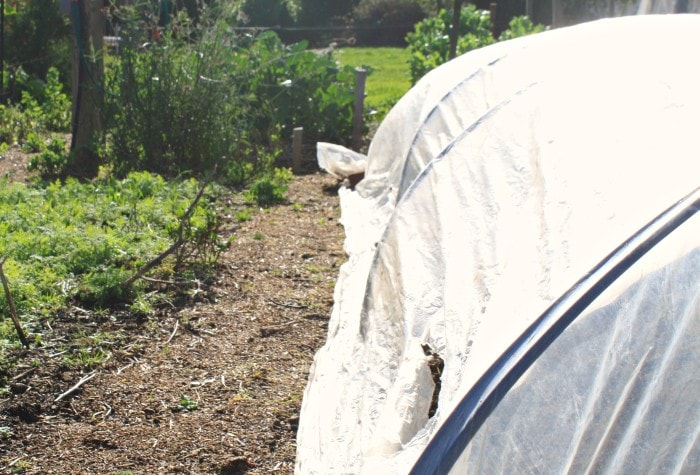

Heat loving crops like pumpkin, zuchinni or tomato need warmth, its the trick to strong steady growth, and strong steady growth from the outset, makes for awesome crops later on down the track.
In an ideal world, we plant our crops out when soil temperatures align with their happy place, but what happens when spring relentlessly drags on?! We need tricks!, to not only warm the soil but to also soften the blow of wild weather. A suddenly hot or windy or cold day takes its toll on seedlings, using precious energy to cope and then recover, energy that is better spent on growing ever onwards.
This is for those of you who don't have a greenhouse. Here are 5 simple ways to warm soil + protect heat loving seedlings through spring. Let's get your grow on!
Cloches
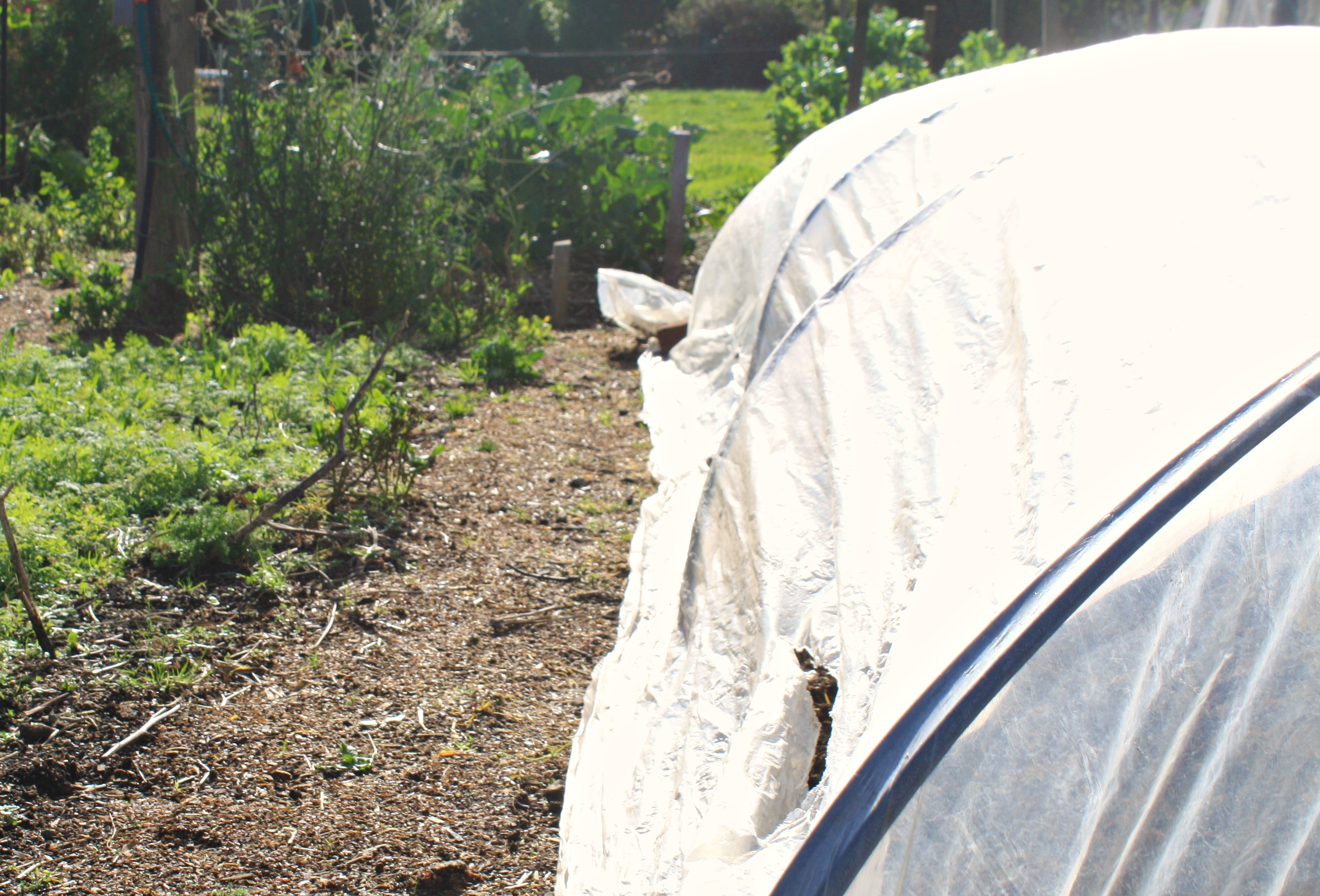
Cloches are the best greenhouse substitute. Hoops are easy to make or find secondhand. Tall hoops are the way to go - atleast 1.5m but my fav is 1.8m. Taller allows much better airflow, and the other huge advantage is that it buys you time - you can leave your crops beneath them longer if the weather is icky for ages.
Thing is, cloches can become unbearably hot and steamy and airless. Open them during the day and let the fresh air pour in, the degree to which you open them depends on the day. All the way on fine days, partially on cold days. Shut them back up before the day cools too much. Secure the plastic well so its taut and doesn't sag onto the poor plants, nor blow about on a windy day - wreckage will ensue.
Use cloches to kick start salads, zucchini, cucumbers, dwarf beans, pumpkins, melons and determinate/ bush tomatoes.
Black plastic
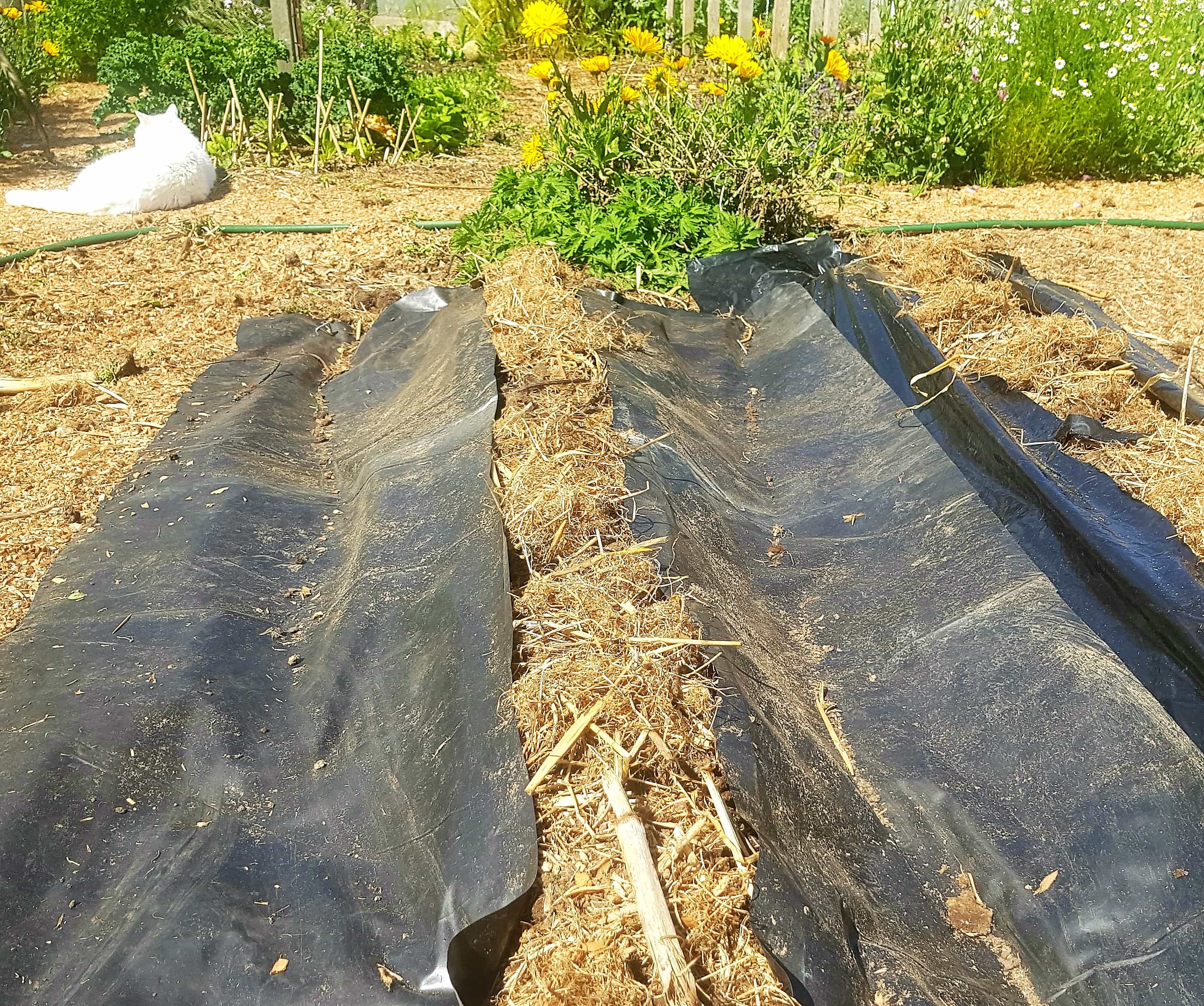
Looks ugly, but its fab! This is how I warm the soil in prep for planting kumara. Use this trick for any heat loving crop eg: pumpkin, melon or tomatoes. Lay the plastic on top of the prepared bed, slash a slit and plant through it. It's like jumping into a bed that's been pre warmed with a hottie - delicious!
Black compost, un-mulched also warms nicely when bathed in sun, nowhere near as dramatically as plastic does but even so its useful to know: don't mulch until life is warmer.
Containers

Don't underestimate the temperature difference of soil when in a container - especially if it's black plastic! Containers are a great way to get smaller, quick turn around crops like salads, dwarf beans, kale, bok choy, dwarf tomatoes or beetroot going, to tide you over until the weather improves and soil warms. If summer starts miserably I grow my peppers, aubergines and tomatoes in pots in the greenhouse - what a difference! Here's my container growing guide.
Strawbales, car windscreens + old windows
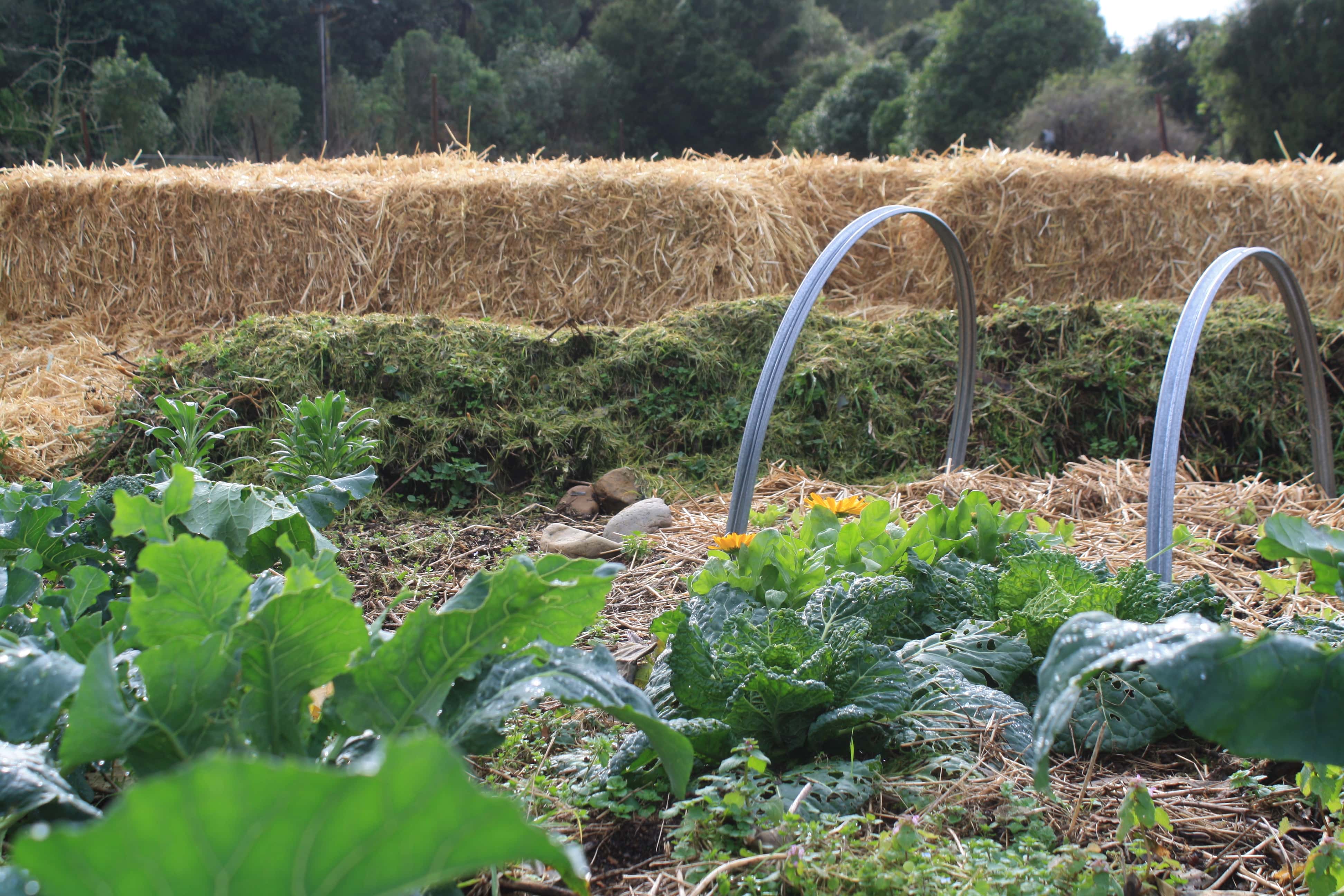
This eclectic collection is all about creating a toasty micro climate. Set your bale or window up on the south side - this does two things, it blocks off the cool southern draught as well as amping up + trapping the sun as it shines in from the north. Cosy!
Old crops + greencrops
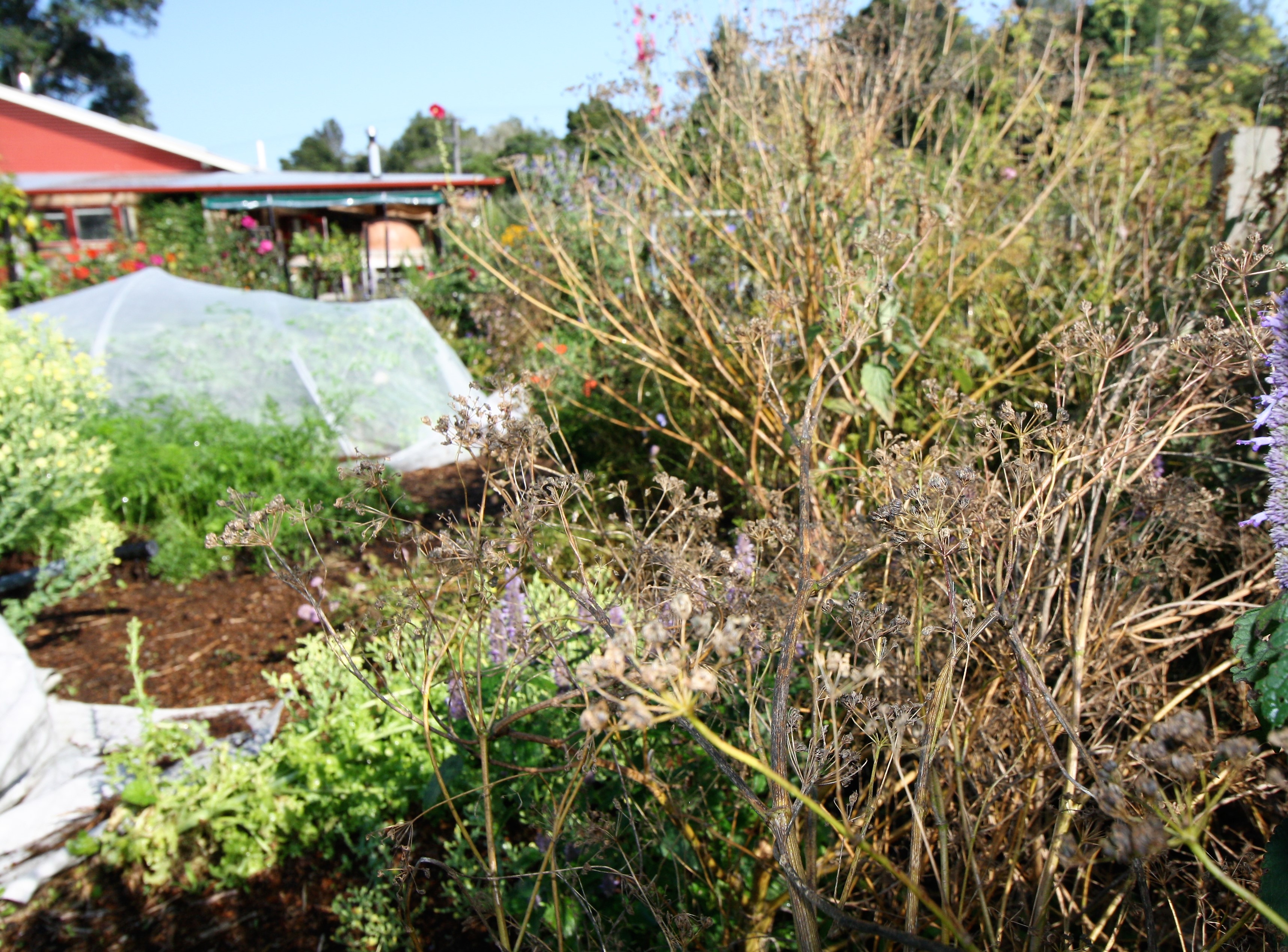
Planting seedlings amongst established crops is a tale as old as the hills, its perfectly natural - seeds fall from the mother plants and up they rise beneath and around, no help from anyone. This trick isn't as hot as cloches or plastic or suntraps, but it does for sure moderate the ups and downs, and seedlings love it!
Snap off however much foliage it takes to create enough space and light, dollop compost in the space + plant away. Keep an eye on things, as you must anyway for your seedling babies, and continue to clear foliage so as to keep the light on task.
Use the golden space that's created beneath old crops like parsley, endive, cornflowers, broccoli (to name a few) as they tower up to seed. Or create pockets amongst established greencrops in the same way. I like to start my pumpkins amongst lupins - they love it!
